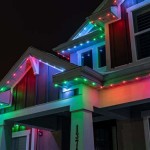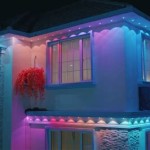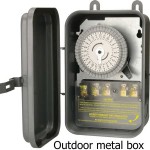Outdoor Lanterns With PIR Sensor: Essential Aspects for Enhanced Safety and Convenience
Outdoor lanterns with Passive Infrared (PIR) sensors have become indispensable for illuminating outdoor spaces and enhancing security. PIR sensors detect motion within their range, automatically activating the lantern to provide ample lighting when needed. This comprehensive guide explores the essential aspects of outdoor lanterns with PIR sensors to help you make informed decisions when selecting and installing these devices.
1. Detection Range and Sensitivity:
PIR sensors have a specific detection range and sensitivity that determine their ability to detect motion. Consider the size of the area you need illuminated and the distance at which you want the lantern to activate. Choose lanterns with adjustable detection range and sensitivity to customize their performance.
2. Field of View:
The field of view (FOV) of a PIR sensor indicates the area where it can detect motion. Wide FOV lanterns cover a larger area, while narrow FOV lanterns focus on a specific path or direction. Select a lantern with an appropriate FOV to ensure optimal coverage of the desired area.
3. Activation and Deactivation Time:
Outdoor lanterns with PIR sensors have adjustable activation and deactivation times. The activation time determines how quickly the lantern turns on after detecting motion, while the deactivation time sets the duration it stays illuminated after the motion has stopped. Adjust these settings to meet your specific requirements.
4. Weather Resistance:
Outdoor lanterns are exposed to harsh weather conditions. Ensure that the lantern you choose has an appropriate IP rating to withstand rain, snow, and extreme temperatures. Look for lanterns with a high IP rating, such as IP65 or IP66, for enhanced durability.
5. Light Source and Brightness:
Outdoor lanterns with PIR sensors can utilize various light sources, including LED, incandescent, and fluorescent. Consider the brightness and color temperature of the light source to match the intended purpose and ambiance. LED lanterns offer energy efficiency and long lifespan.
6. Installation and Maintenance:
Proper installation is crucial for optimal performance. Ensure that the lantern is mounted securely at the desired height and location. Follow the manufacturer's instructions for installation and maintenance. Keep the sensor lens clean to maintain accurate motion detection.
Conclusion:
Outdoor lanterns with PIR sensors provide enhanced safety and convenience by automatically illuminating outdoor spaces when needed. By considering the essential aspects discussed in this guide, you can select and install the most suitable lanterns to meet your specific requirements. Remember to choose lanterns with appropriate detection range, field of view, activation and deactivation times, weather resistance, light source, and ease of installation and maintenance. With the right outdoor lanterns with PIR sensors, you can create well-lit, secure, and welcoming outdoor spaces.

Twembrook Pir Sensor Wall Lantern Black Country Metalworks

Neri Pir Outdoor Polycarbonate Wall Lantern Black Litecraft

Pir Lanterns

Elstead Norfolk Outdoor Lantern Wall Light With Pir Sensor Black Lighting Direct

Lucide Claire Half Lantern Outdoor Wall Light With Pir Sensor Anthracite Lighting Direct

Blooma Varennes Matt Black Halogen Pir Motion Sensor Outdoor Lantern Wall Light 60w Diy At B Q

Outside Security Wall Light In Traditional Style Built Pir Sensor

Asd Lighting Half Lantern Wall With Pir Sensor Hl Bk060p

Lutec Flair Outdoor Lantern Wall Light With Pir Sensor Black Aluminium Lighting Direct

Lutec Cotswold Flush Coach Lantern With Pir Free Delivery







